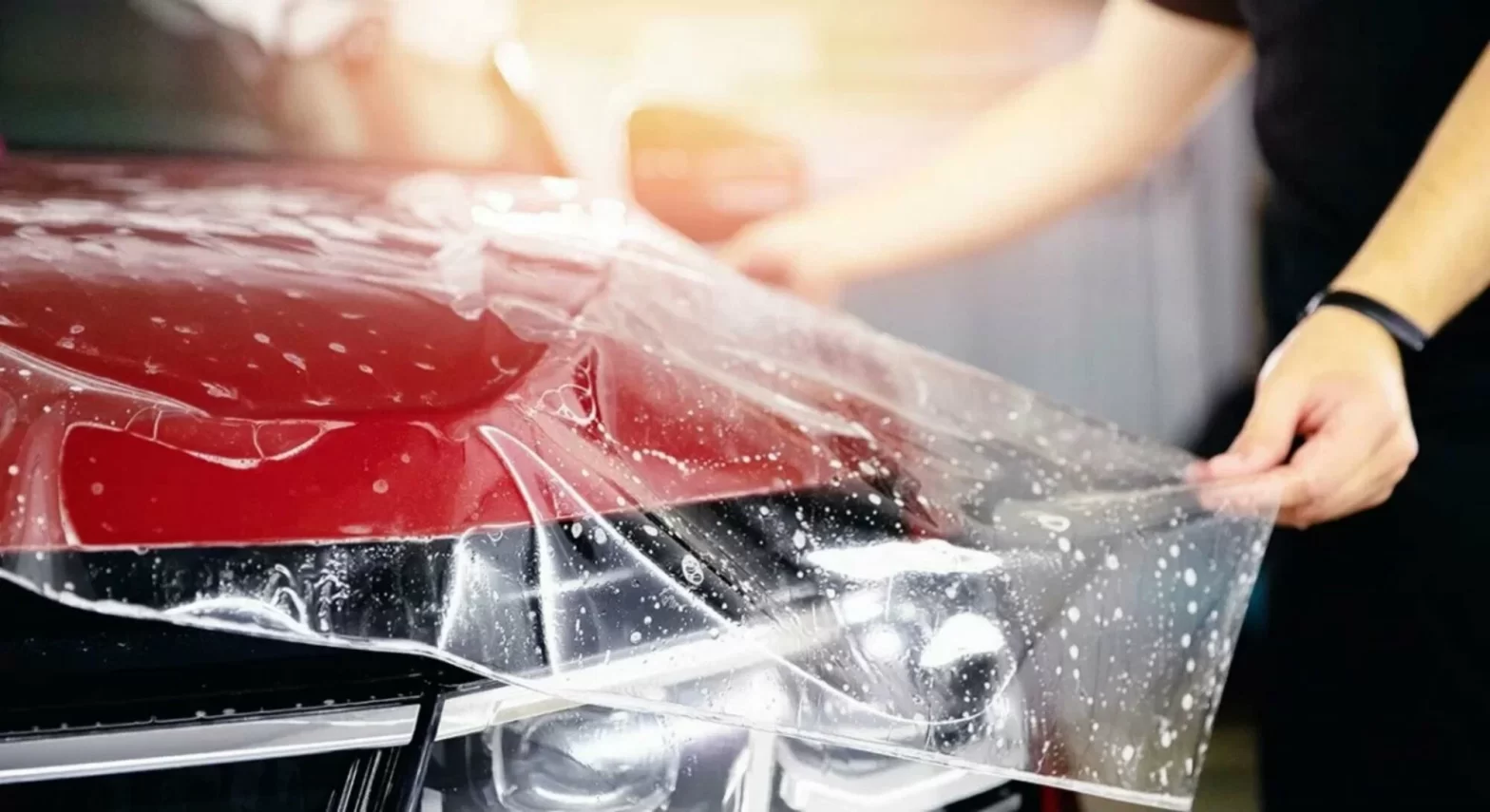What is PPF (Paint Protection Film)?
Paint Protection Film (PPF), also known as clear bra, is a thin, transparent urethane film applied to a vehicle’s painted surfaces to protect them from damage. It’s like giving your car a nearly invisible armor that shields the paint from scratches, chips, road debris, and more. While some car owners opt for DIY kits, professional PPF coatings take protection to the next level with precise installation and a perfect fit.
The Importance of Professional PPF Coatings
We all know that a shiny, scratch-free vehicle is a source of pride. But keeping it that way can be tough, especially if you drive in areas prone to gravel, insects, or harsh weather conditions. That’s where professional PPF coatings come in. These films are specifically designed to preserve the integrity of your car’s paint, ensuring it looks brand new for longer.
How PPF Coatings Work
The Science Behind PPF
PPF coatings are made from a special polymer blend of polyurethane, which is highly resistant to abrasion, weathering, and impact. The film is designed to “self-heal” minor scratches and swirl marks when exposed to heat, making it unique compared to other protective coatings. Essentially, PPF bonds to your vehicle’s surface at a molecular level, offering long-lasting protection that’s hard to beat.
How PPF Protects Your Vehicle’s Paint
The beauty of PPF lies in its dual-action protection. Not only does it guard against physical damage like rock chips, bird droppings, and tree sap, but it also defends your vehicle’s paint from harmful UV rays. UV rays can cause the paint to fade and lose its glossy finish over time, but with a layer of PPF, your car stays vibrant and fresh-looking.
Benefits of Professional PPF Coatings
Scratch and Impact Resistance
One of the most appealing benefits of professional PPF coatings is their impressive resistance to scratches and impacts. The film’s tough surface acts as a buffer between your car’s paint and external elements. Whether it’s a pebble hitting your hood or an accidental scrape in a parking lot, the PPF film absorbs the impact and minimizes damage to the paint underneath.
UV Protection and Fading Prevention
UV rays are a vehicle’s worst enemy. Over time, they can break down the paint, causing it to fade and discolor. But with PPF coatings, you have a built-in shield against this. The film not only protects the paint from the sun’s harmful rays but also helps to maintain the vibrancy of your car’s color for years to come.
Easier Vehicle Maintenance
The self-cleaning nature of PPF is another perk. The film’s hydrophobic properties allow water, dirt, and debris to be easily wiped away, making regular cleaning a breeze. And since the film is non-porous, contaminants like bird droppings or tree sap don’t stick as easily, meaning you won’t have to spend hours scrubbing your car to remove stubborn stains.
Types of PPF Coatings Available
Glossy vs. Matte PPF Coatings
PPF coatings come in two primary finishes: glossy and matte. The glossy finish enhances the shine of your vehicle’s paint, providing a sleek, polished look. On the other hand, matte PPF coatings are perfect for those who want a more understated, sophisticated appearance that reduces glare and gives a smooth, non-reflective finish.
Self-Healing PPF Films
Self-healing PPF is the real game-changer. This type of film has the ability to “heal” minor scratches or swirls on its surface when exposed to heat. The heat causes the molecular bonds in the film to close, effectively removing any visible imperfections. This is ideal for those who want to keep their vehicle looking flawless without constantly worrying about small blemishes.
Hydrophobic PPF Films
Hydrophobic PPF coatings are specially designed to repel water. These films have an added layer of water-resistant properties, which means that rain, snow, and mud slide right off your car without leaving any residue. This makes washing and maintaining your vehicle even easier, and your car will look cleaner for longer.
How to Choose the Right PPF for Your Vehicle
Factors to Consider: Vehicle Type, Usage, and Budget
When choosing the right PPF for your car, consider factors like the type of vehicle you own, its usage, and your budget. For instance, if you drive an expensive sports car, you might want to invest in premium self-healing PPF. If you’re driving an everyday vehicle, a standard PPF with UV protection may suffice. The cost of installation can vary based on the quality and brand of the film, as well as the amount of coverage your car requires.
Professional Installation vs. DIY Kits
While DIY PPF kits are available, they often don’t offer the same level of protection or precision as professional installations. Professional PPF installation ensures that the film fits seamlessly on your vehicle, without any bubbles, wrinkles, or visible edges. Plus, experts have the knowledge and tools to apply the film in a way that maximizes its effectiveness.
The PPF Installation Process
What to Expect During Professional Installation
A professional PPF installation typically takes a few hours, depending on the size of your vehicle and the complexity of the application. The process involves thorough cleaning of the car’s surface, followed by the precise application of the PPF film. The film is carefully cut and shaped to match the contours of your vehicle’s panels, ensuring perfect coverage.
How Long Does the Installation Take?
On average, the installation process takes between 4 to 8 hours for a full vehicle wrap. However, for smaller vehicles or partial installations (like the hood or bumper), it could take less time. It’s essential to factor in this time when scheduling your PPF installation.
Aftercare and Maintenance for PPF Coatings
Regular Cleaning and Maintenance Tips
To keep your PPF coating in top condition, it’s essential to clean your vehicle regularly. Use a pH-balanced soap and a microfiber cloth to wipe away dirt and grime. Avoid using abrasive brushes, as they could damage the film. Also, it’s recommended to avoid high-pressure washers, as the force may cause the edges of the film to peel.
When to Get Your PPF Checked
While PPF coatings are durable, it’s still a good idea to check the film periodically for any signs of damage, such as lifting or bubbling. If you notice any issues, it’s best to take your vehicle to a professional for an assessment and possible repair.
Common Mistakes to Avoid After Installation
Don’t Use Harsh Chemicals
One of the most common mistakes car owners make after PPF installation is using harsh chemicals for cleaning. Avoid cleaning products that contain wax, oils, or solvents, as they can break down the adhesive and compromise the integrity of the film.
Avoid Automated Car Washes
Automated car washes with rotating brushes can cause damage to the PPF film, especially along the edges. It’s best to hand wash your vehicle or use a touchless car wash to avoid unnecessary wear and tear.
Is Professional PPF Worth the Investment?
Cost vs. Long-Term Benefits
The cost of professional PPF installation can range from a few hundred to a few thousand dollars, depending on your vehicle and the coverage you choose. However, when you consider the long-term benefits—like protection from chips, scratches, and fading—it’s often worth the investment. Additionally, the resale value of your car may increase, as a well-maintained exterior is an attractive selling point.
Resale Value Impact
A car with PPF protection is likely to maintain its appearance and value longer than one without. Potential buyers are often willing to pay more for a vehicle that has been well cared for, especially if the paint looks fresh and free from blemishes.
PPF Coating Vs. Ceramic Coating: What’s the Difference?
Key Differences Between PPF and Ceramic Coating
While both PPF and ceramic coatings provide protection for your car’s paint, they serve different purposes. PPF is a physical film that protects against chips and scratches, while ceramic coatings are chemical-based and create a hydrophobic layer that repels water and contaminants. Some car owners opt for both for ultimate protection.
Can They Be Used Together?
Yes, PPF and ceramic coatings can be used together to enhance protection. The PPF film protects against physical damage, while the ceramic coating provides additional water-repellent and dirt-resistant properties.
The Future of PPF Coatings
Innovations in PPF Technology
The world of automotive protection is constantly evolving. Future advancements in PPF technology may lead to even more durable, self-healing films, with enhanced features like color-changing abilities and better UV resistance. As the demand for vehicle protection increases, we can expect even more innovations in PPF coatings.
The Growing Trend of PPF in the Automotive Industry
As more car owners recognize the value of preserving their vehicle’s paint, the popularity of PPF continues to rise. What was once considered a luxury for high-end vehicles is now becoming a standard option for everyday cars.

